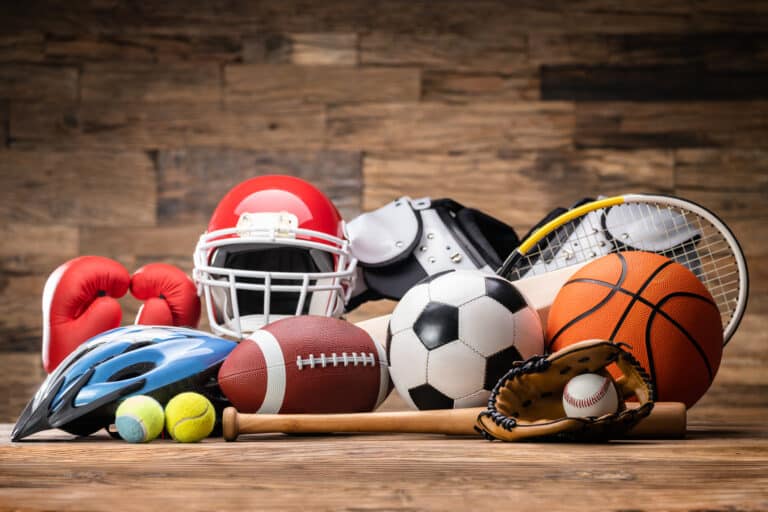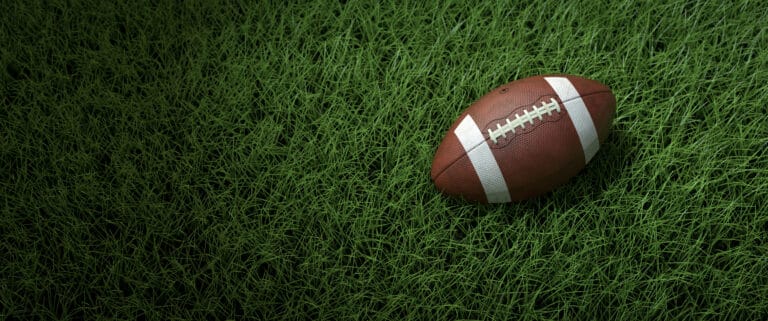Concussions in sports have been getting more attention over the last several years in the medical, legal, and media communities.
There is no way to prevent concussions in sports, but there are standards and laws in place to assist in protecting the athlete who sustains a concussion from falling victim to the dangers and risks of a premature return to play. The dangers and risks include prolonged symptoms, post-concussive syndrome, permanent brain injury, second impact syndrome, and even death. This article is aimed at providing resources and information for a practitioner to consider when dealing with athletes of all ages and levels to hopefully prevent these permanent injuries.
Standard of Care
Whether you are a team physician, a team athletic trainer, or a doctor asked to assist in caring for an athlete who has sustained a concussion, you need to do your due diligence and research what the standard of care is for treating the concussed athlete. The standard of care is defined as: “What would another reasonably prudent healthcare professional do in the same or similar circumstances?” The standard of care for concussion management and return to play cases can come from numerous places, including but not limited to: international consensus papers, medical research and articles, protocols set up by the organization you are dealing with, and state law. Combining the research together and having a working knowledge of what needs to be accomplished will assist you with proving the best care for your concussed athlete.
International Consensus Papers & Medical Literature
Over the years, there have been numerous and evolving guidelines and consensus statements that have become an integral part of the care provided to concussed athletes. In 2001, the First International Symposium on Concussion in Sport was held in Vienna, Austria.1
The aim of the symposium was to provide recommendations for the improvement of safety and health of athletes who suffer concussive injuries in … sports. … During the course of the symposium, a persuasive argument was made that a comprehensive systemic approach to concussion would be of potential benefit to aid the injured athlete and direct management of decisions.2
Since that time, the International Symposium has been held three times, each time providing an update to build on the principles outlined in the previous documents and to develop a further conceptual understanding of using the formal consensus-based approach to returning an athlete to play post-concussion.3
The most recent consensus statement was published in 2013: The Consensus statement on concussion in sport: the 4th International Conference on Concussion in Sport held in Zurich, November 2012 ( “Zurich II)”.4 Zurich II discusses an array of issues related to sports concussions, including concussion management. Numerous other articles are also available that assist in defining a standard of care, the National Athletic Trainers’ Association came out with a Position Statement on Management of Sport Concussion in 20045, updated in 20146, and the American Academy of Neurology published an article on concussion evaluation and management in sports in 2013.7 In the upcoming months, another consensus statement is set to be published on the 5th International Consensus Conference on Concussion in Sport that took place in Berlin in October 2016, which will lay out what was discussed and any changes or amendments to the previous consensus statements setting forth guidelines for return to play following a concussion.
Organizational Rules and Protocols
Today, several organizations and institutions have issued their own Return to Play Rules, Procedures, and Protocols to ensure the safety of their athletes and will modify the standard of care to fit their sport and organization. Many professional sports teams, such as Major League Soccer, have a written protocol for managing concussions and return to play. The Major League Soccer Protocol modifies the graduated return to play steps identified below by adding Heading Drills, a skill specific to soccer which involves contact with the head. Many colleges must follow the guidelines and procedures set forth by the National Collegiate Athletic Association (“NCAA”), which has set forth guidelines on concussion diagnosis and management best practices.8 The NCAA advocates for collegiate institutions to make their own Concussion Management Plan, provide NCAA Concussion Fact Sheets to their athletes, coaches, team physicians, athletic trainers, and athletic directors, to have a pre-participation baseline concussion assessment, etc.9 Many other sports organizations and high schools have set forth their own policies and procedures. You must educate yourself on what the requirements are of the organization or institution your athlete plays for to ensure you are satisfying the medical standard of care and the organizational/institutional requirements.
State Law
In 2006, Zackery Lystedt, then 13-years-old, sustained a concussion in a football game. He was allowed to return to play just fifteen minutes after his concussion. This premature return to play resulted in Zackery collapsing, sustaining a permanent traumatic brain injury. Because of this tragedy, Washington State enacted the Zackery Lystedt Law in 2009, which is aimed at protecting other youth athletes who sustain a concussion in sports. Since 2009, all 50 states have enacted youth sports concussion safety laws, most of which are modeled after the Zackery Lystedt Law. Some key provisions among these state laws are: (1) Guidelines: schools should develop concussion guidelines and educational programs; (2) Education and Consent: schools should develop a concussion and head injury fact sheet and require youth athletes and a parent/guardian to sign and return before being allowed to participate in the sport; (3) youth athletes should take preseason baseline neuropsychological testing; (4) immediate removal if a concussion is suspected; and (5) youth athletes who have been removed from play because of a concussion cannot be returned to competition until they are evaluated by a licensed health care provider, and have received written medical clearance to return to play from a licensed health care provider. What a licensed health care provider constitutes depends on each state’s statutes, in some circumstances it is a medical doctor and in others a licensed athletic trainer will satisfy the definition. However, in all circumstances the licensed health care provider should have specific training in the diagnosis and management of concussions.
Summary of the Standard of Care
Below is a summary of the standard of care in a general return to play concussion case. This would need to be modified based upon any state laws or organizational/institutional documents or protocols that would apply to a situation.
The first step when an athlete is suspected of having a concussion is to immediately remove him or her from play and have a healthcare professional determine whether the athlete has sustained a concussion, which is defined:
Concussion is a brain injury and is defined as a complex pathophysiological process affecting the brain, induced by biomechanical forces. Several common features that incorporate clinical, pathologic and biomechanical injury constructs that may be utilized in defining the nature of a concussive head injury include:
- Concussion may be caused either by a direct blow to the head, face, neck or elsewhere on the body with an “impulsive” force transmitted to the head.
- Concussion typically results in the rapid onset of short-lived impairment of neurological function that resolves spontaneously. However, in some cases, symptoms and signs may evolve over a number of minutes to hours.
- Concussion may result in neuropathological changes, but the acute clinical symptoms largely reflect a functional disturbance rather than a structural injury and, as such, no abnormality is seen on standard neuroimaging studies.
- Concussion results in a graded set of clinical symptoms that may or may not involve loss of consciousness. Resolution of the clinical and cognitive symptoms typically follows a sequential course. However, it is important to note that in some cases symptoms may be prolonged.10
Sideline evaluations of cognitive function, such as the SCAT3 and the King-Devick test, have been found to be essential in determining if an athlete has sustained a concussion.11 Other tools that are available include graded symptom checklists, neuropsychological testing, balance assessments; such as the Balance Error Scoring System (BESS), and vision/vestibular testing.12
Once an athlete has been determined to have sustained a concussion, he or she should not return to play that same day. The athlete should have physical and cognitive rest until asymptomatic. Once asymptomatic and the athlete has been objectively determined to be back at his baseline level of functioning, the athlete undergoes a graduated, step-wise progression of exertion prior to medical clearance to return to full competition.13 Zurich II published the following chart for a graduated return-to-play.
The graduated return to play should begin once an athlete is asymptomatic at rest and each step should take 24 hours. During the return to play process, an athlete’s symptoms should be closely monitored and should the athlete become symptomatic, then the athlete should drop back to the previous asymptomatic level and try to progress again after 24 hours of rest. Ultimately, the athlete should not be returned to full competition until he or show has been assessed by an experienced licensed health care provider with training in both the diagnosis and management of concussion.15
Neurocognitive Testing
Many organizations and state laws in youth sports require baseline neurocognitive testing prior to the season starting. One such test is the ImPACT test, a computer-generated test designed to assess the athlete’s neurocognitive abilities. The test is typically performed prior to the season to obtain the athlete’s baseline level of functioning. When administering the baseline ImPACT test, it should be done in a quiet room with no distractions and the proctor of the test should explain what the test will entail. This will assist in getting the athlete to put forth best effort to obtain a valid and reliable baseline score. Once the baseline test is complete, it should be reviewed for validity. Without a valid baseline test, the subsequent post-concussion tests will not be useful in determining if an athlete has returned to their baseline level of functioning.
If an athlete sustains a concussion, then the ImPACT test is repeated post-concussion to determine if the athlete has returned to his baseline level of functioning. If the athlete is asymptomatic, has returned to baseline, and has passed his other objective testing (ex. vision, vestibular, balance, neurological), then the athlete can begin the graduated return to play protocol. Essentially, this testing assists the healthcare provider with determining whether an athlete is back to his baseline cognitive level of functioning after a concussion and if it is safe for the athlete to return to physical activity. This is not a stand-alone tool nor should it form the sole basis of concussion management and return to play decisions, but rather, should act as an aid to the clinical decision-making process.
Record Keeping
As you are managing a concussed athlete through the return to play protocol and process, you must maintain adequate and complete medical records in a centralized location. Often, there is a multidisciplinary approach to managing the concussions and putting the athlete through the return to play protocol. In such situations, there could be a team physician, a team athletic trainer, a neuropsychologist, and other medical providers, but only one healthcare provider has the authority to clear an athlete to return to full competition. It is important that everyone who is treating, managing, and monitoring the athlete keep and maintain records and share the information with the others on the concussion management team. The more information the medical team has and shares, the better likelihood that the appropriate decision will be made and any discrepancies in the records or reemergence of symptoms can be discovered and monitored accordingly. Without proper documentation, record keeping, and review, the margin for error and risk of premature return to play causing injury to the athlete unreasonably increases.
Education
Part of the return to play process relies upon the athlete’s self-report of his or her subjective symptoms. The problem is that many athletes do not understand the signs and symptoms of concussions and the risks and dangers of returning to play prematurely before it is safe to do so. Rather, the athlete is focused on getting back on the field and many adopt the “Rub some dirt in it and you will be fine” or “I’m young and invincible” mentalities. Athletes may not be forthcoming or honest about their symptoms. This is why objective testing is necessary to determine if an athlete’s concussion has fully resolved and why it affects educate the athlete and those around him. To minimize the risks of further injury following a concussion, it affects educate athletes, colleagues, referees, administrators, parents, and coaches about concussions, symptoms, assessment techniques, risks, and principles of safe return to play.
Litigating the Premature Return to Play Concussion Case
For health care providers, make sure that during your treatment you follow the above principles, this will assist you in ensuring you have documentation evidencing you provided proper treatment and have satisfied the standard of care. This will assist in defending any claims, should they be brought.
For attorneys, each return to play case is different, but the principles laid out will assist you in determining if there is a case worth pursuing, and how to piece the puzzle together if there is one. Practice pointers: (1) research your standard of care based upon the medical consensus papers and articles, state law, and organizational/institutional policies and procedures; (2) gather documentation and records that prove that the standard of care was met or deviated from; (3) if utilized, ensure there was proper baseline neurocognitive testing and post-injury tests; (4) discern what was done to objectively determine the athlete was asymptomatic and safe to begin the return to play protocol; (5) ensure the graduated return to play protocol was followed and the athlete monitored during the process; (6) gather as much information as you can from the athlete, team, health care providers, and organization/ institution, for example, if there was a multidisciplinary approach to the return to play, ensure that the healthcare provider making the ultimate decision had all of the necessary records and documentation and if there is a contract between the team and the healthcare provider, obtain that as there are ethical concerns in certain situations where an healthcare provider agrees to pay to be the team’s physician; and (7) understand your athlete/client’s injury and how it was caused by a premature return to play as permanent or prolonged concussion symptoms can occur from a repeat concussion or too much exertion while the athlete’s initial concussion had not fully resolved.
Conclusion
Concussion management is an ever-evolving area of treatment designed to better protect athletes from suffering the lingering and potentially permanent effects and symptoms of a concussion and premature return to play. Remember, treating concussions, particularly those that do not resolve quickly, is a complex and dynamic process. It is important to stay up to date on the literature, consensus statements, updated organizational/institutional protocols and requirements, and state laws. Maintain adequate and complete records. Educate the athlete, the parents, if applicable, coaches, etc. to ensure everyone is doing their role to protect the athlete, is aware of the risks and dangers, and can assist in providing the best care for the safe return to play of the concussed athlete.
References
- Aubry M, Cantu R, Dvorak J, et al. Summary and agreement statement of the 1st International Symposium on Concussion in Sport, Vienna 2011. Clin J Sport Med 2002:12:6-11.
- Aubry M, Cantu R, Dvorak J, et al. Summary and agreement statement of the 1st International Symposium on Concussion in Sport, Vienna 2011. Clin J Sport Med 2002:12:6-11.
- McCrory P, Johnston K, Meeuwisse W, et al. Summary and agreement statement of the 2nd International Symposium on Concussion in Sport, Prague 2004. Br J Sports Med 2005; 39:196-204; McCrory P, Meeuwisse Q, Johnston K, et al. Consensus statement on concussion in sport: the third international conference on concussion in sport held in Zurich, November 2008. Phys Sportsmed 2009;37:141-59; McCrory P, Meeuwisse WH, Aubry M, et al., Consensus statement on concussion in sport: the 4th International Conference on Concussion in Sport held in Zurich, November 2012. Br J Sports Med 2013;47:250-258.
- McCrory P, Meeuwisse WH, Aubry M, et al. Consensus statement on concussion in sport: the 4th International Conference on Concussion in Sport held in Zurich, November 2012. Br J Sports Med 2013;47:250-258.\
- Guskiewicz, K, Bruce, S, Cantu, R, et al., National Athletic Trainers’ Association Position Statement: Management of Sport-Related Concussion. Journal of Athletic Training 2004;39(3)280-297.
- Broglio, S, Cantu, R, Gioia, G et al., National Athletic Trainers’ Association Position Statement: Management of Sport Concussion. Journal of Athletic Training 2014:49(2):000-000.
- Giza, C, Kutcher, J, Ashwal, S, et al. Summary of evidence-based guideline update: Evaluation and management of concussion in sports, American Academy of Neurology.
- http://www.ncaa.org/sport-science-institute/concussion-diagnosis-and-management-best-practices
- http://www.ncaa.org/sport-science-institute/concussion-diagnosis-and-management-best-practices
- McCrory P, Meeuwisse WH, Aubry M, et al. Consensus statement on concussion in sport: the 4th International Conference on Concussion in Sport held in Zurich, November 2012. Br J Sports Med 2013;47:250-258.
- McCrory P, Meeuwisse WH, Aubry M, et al. Consensus statement on concussion in sport: the 4th International Conference on Concussion in Sport held in Zurich, November 2012. Br J Sports Med 2013;47:250-258
- Giza, C, Kutcher, J, Ashwal, S, et al. Summary of evidence-based guideline update: Evaluation and management of concussion in sports, American Academy of Neurology.
- Giza, C, Kutcher, J, Ashwal, S, et al. Summary of evidence-based guideline update: Evaluation and management of concussion in sports, American Academy of Neurology.
- McCrory P, Meeuwisse WH, Aubry M, et al. Consensus statement on concussion in sport: the 4th International Conference on Concussion in Sport held in Zurich, November 2012. Br J Sports Med 2013;47:250-258 at Table 1.
- McCrory P, Meeuwisse WH, Aubry M, et al. Consensus statement on concussion in sport: the 4th International Conference on Concussion in Sport held in Zurich, November 2012. Br J Sports Med 2013;47:250-258 at Table 1; Giza, C, Kutcher, J, Ashwal, S, et al. Summary of evidence-based guideline update: Evaluation and management of concussion in sports, American Academy of Neurology.








